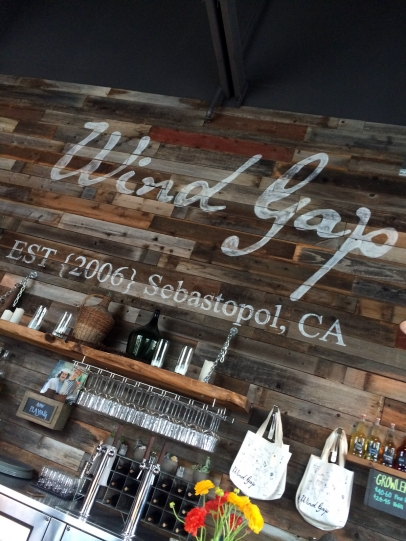Winemaker Spotlight: Wind Gap Wines and Pax Mahle
When the boss says it’s time to take the boys to kiss the dirt, it means my wife wants to go to California and say hello to some of our growers and strengthen our relationships.
Spring break last year was the first time that the 13-year-old and 9-year-old would actually see how the grocery item their eponymous shoppe sells to make a living is produced and meet some of the growers who are the unsung heroes of the wine biz.
After our VRBO rental failed to match the images or the write-up – “a quaint wine villa situated in some of the most beautiful vineyards of Sonoma County, complete with hot tub, bocce court and beautiful panoramic views” – we bailed and settled for the Hilton in Santa Rosa. After a bite to eat at one of the fancy, hipster farm-to-table restaurants in Santa Rosa complete with no shortage of beard wax, fedoras and plaid repurposed flannel, we turned in and got some rest.
Dirty Boots
Our first appointment took us to the Barlow, a converted apple processing plant that was gentrified and turned into a downtown series of shops, bars and winemaking flats. Here Pax and Pam Mahle started Wind Gap Wines as an channel for occult varietals and wines that did not fit into what they had already become known for: the “Pax” portfolio famous for big, rich expressions of Syrahs from cool-climate vineyards in Sonoma County and Mendocino. A former sommelier who took a job on the West Coast as the corporate wine buyer for Dean & DeLuca in 1997, Pax was nipped with the wine bug severely enough to start and put himself on the map in California. As he says: “wanting to be the guy with the dirty boots making the wine, not the guy with the bowtie serving the wine.”
When we started the shoppe, we stocked the shelves with many wines that today feel too big, too jammy and (in some cases) totally undrinkable. To my wonder, so too was much of the wine world waking up to the same realization, or at least the part we paid attention to. Pax had started making Syrah under the Pax Wines label, and many of these wines were known for being plush, intense and high octane, creeping up to 17 percent. All of a sudden, Pax stopped drinking those types of wines, including the ones he had made.
In Nature's Hands
He is now going after something completely different in the Barlow wines with more grace and less muscle, more liveliness and less jolting value. These wines are not frail or bony: they have backbone and structure, and seamlessly weave together earth and fruit notes. He would rather pick on the underripe side and allow Mother Nature to do her work than intervene in some way to “fix” the outcome of the wine.
While at Wind Gap’s facility we spent the morning tasting an array of wines with Pax while the vinyl was spinning 60s and 70s music that seemed to match the wines perfectly: Chardonnay, Jura Varietals, Pinot Noir, Grenache and Syrahs, all with a symmetry in the sense that they are wines of tension and speak of the place they’re from. We were taken with the first red that he poured us slightly chilled, the 2015 Soif, an amalgam of varietals from very old vines and grapes that the wine-drinking public may have no clue even grow in California. This was the wine that tied it all up in a neat little bow, the change from structured wines to age over a lifetime, to wines that quench your thirst and give immediate pleasure. That 2015 Soif became our number-one wine of 2016. Funny how kissing the dirt and breaking bread with wine rock stars works.
As the boys climbed the barrels, explored every cranny of Pax’s facility, watched the interns clean the old barrels and transfer juice from one vessel to another, I could only wish for them that the intrigue stays strong and Pax’s vision stays sharp.







